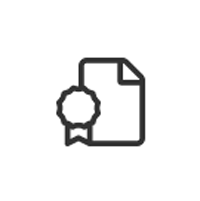Additional information
| ICS Code | |
|---|---|
| ICS Name | |
| Edition | |
| Legal Status | |
| Pages | |
| Published Date | |
| Replaced by | |
| Replaces | |
| Sector | |
| Standard Development Stage | |
| Standard Status | |
| Technical Committee | |
| Type of Standards |

P912.00
The structural use of timber ― Part 1: Limit states design ― Code of practice
| ICS Code | |
|---|---|
| ICS Name | |
| Edition | |
| Legal Status | |
| Pages | |
| Published Date | |
| Replaced by | |
| Replaces | |
| Sector | |
| Standard Development Stage | |
| Standard Status | |
| Technical Committee | |
| Type of Standards |
This standard gives guidance on the design, fabrication and erection of timber structures (and structural timber components in structures framed in other materials) where the design is based on limit states. NOTE 1 The term “timber structures” refers to structural members and frames that consist of structural timber components including the detail parts, bolts or other fasteners required in fabrication and erection.
This standard is applicable to structural timber in buildings and in other stationary structures except that supplementary rules or requirements may be necessary for the following:
a) unusual types of construction;
b) mixed systems of construction (i.e. timber and other structural materials); and
c) timber structures that
1) have unusual heights or spans,
2) are required to be movable or readily dismantled,
3) are exposed to severe environmental conditions or possible severe loads such as those resulting from vehicle impact or chemical explosion,
4) are required to satisfy aesthetic, architectural or other requirements of a non-structural nature,
5) use materials or products not listed in Clause 5, or
6) have other special features that could affect design, fabrication or erection.
NOTE 2 The designer may have to carry out supplementary research in respect of structures that are considered unusual in a Southern African context. To determine whether a structure is unusual or not, it is necessary to consider its span, height, nature of the construction and the type of timber used.
NOTE 3 Roof trusses manufactured from sawn pine of thickness 38 mm or 50 mm and that have a slenderness ratio (span/height of truss at centre) of less than 15 are often used at spans of up to 25 m and roof trusses manufactured from 70 mm laminated pine or saligna of thickness 70 mm and that have slenderness ratios as high as 20 have been used at spans of 30 m to 35 m. However, the design of such large and slender roof trusses in timber requires the use of methods of analysis that will properly account for slip in the joints and the secondary moments due to such joint and member deformations. Large laminated timber portal frames of spans up to 50 m may be designed within the scope of this standard provided that appropriate methods of analysis are applied.
NOTE 4 Timber floors are generally constructed using solid or laminated beams within the limits dictated by rational design and by the sizes commercially available. Trusses have rarely been used to build floors of spans exceeding 10 m. While large laminated timber beams have been used to build pedestrian, vehicle and rail bridges in other countries, such structures are unusual in Southern Africa.
NOTE 5 Where timber is subjected to severe cyclical changes in moisture content, its deflection increases and its strength can also be affected. However, within normal ranges of moisture content, timber performs well in extreme cold and heat and in hostile chemical environments.